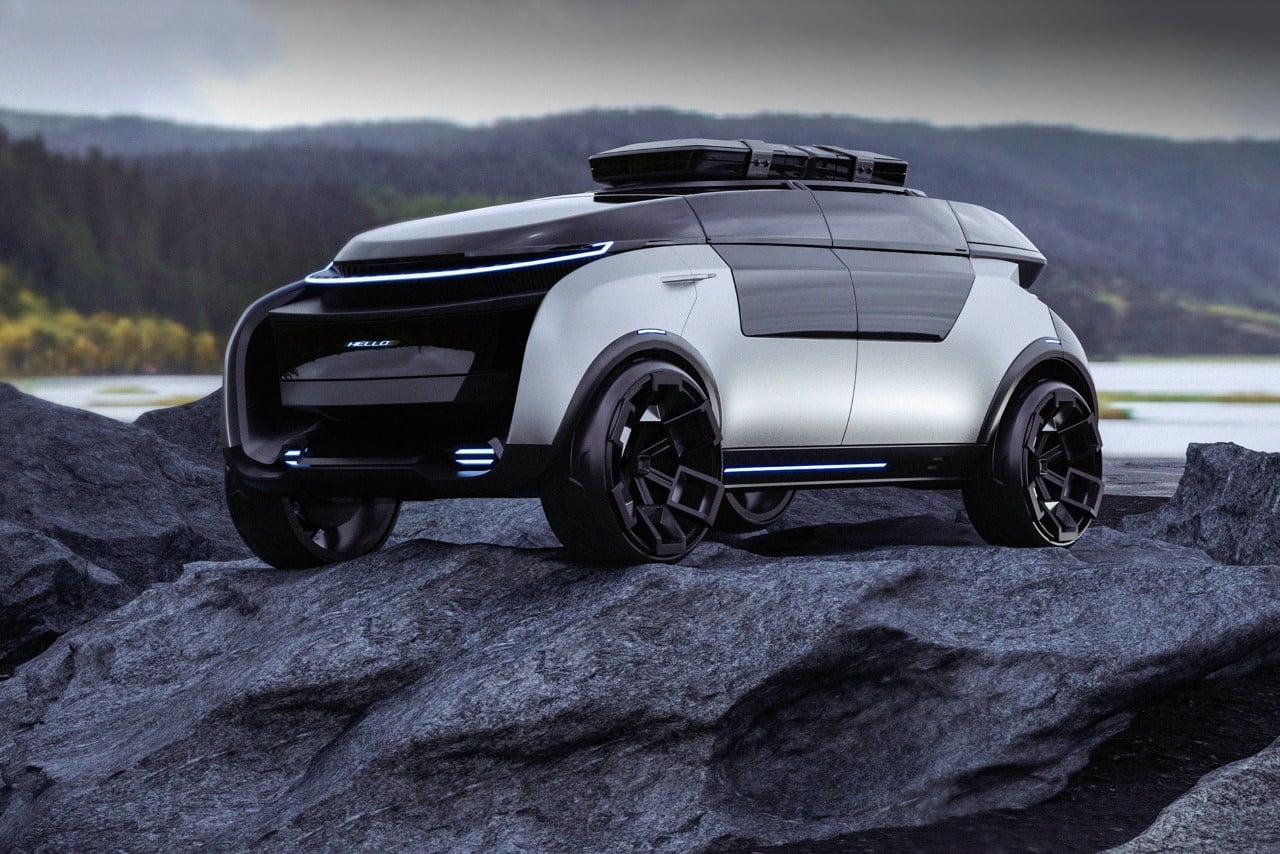
Although it doesn’t really appear traditionally aerodynamic at first glance, the DKM 2.0 has an aesthetic that feels minimal yet complex, and builds on the future of automotive design by having a radical visual approach.
Designed as a fully autonomous vehicle, the DKM 2.0’s visual aesthetic immediately stands out as unique. Its silhouette looks nothing quite like any other car. It isn’t as maximal as a sports car, or as minimal as today’s electrified SUVs. Instead, it’s a fusion of the two, relying on multiple forms stacked on one another that have been merged and simplified. The car features a unique interior with seating designed more like a room than a car. Seats face each other, creating a cabin on wheels that allow passengers to socialize with each other as the car autonomously moves forward. The concept ditches the steering wheel and dashboard entirely too, in a bid to imagine what fully-autonomous vehicles can and should look like.
Designer: Vladislav Semenov
The car’s design comes from Kazakh automotive stylist Vladislav Semenov. As far as its references go, it seems like the DKM 2.0’s most notable inspiration comes from vision conceptual automobiles, combined with the realistic design of companies like Rivian, Canoo, and Polestar. There’s a level of purity in the use of silver and black, and those headlights look clean and futuristic as heck. However, the upper and lower halves of the car are designed in a staggered way that instantly draws the eye. The front of the car features a flat-ish panel where you’d expect the radiator grill, with the front fender emerging outwards, almost like shoulder blades. This probably helps guide air into the car’s intakes on each side, while the top has that razor-thin headlight, and then the ‘windscreen’ that emerges almost like an independent entity.
This unique stepped design provides an interesting visual, since it causes an obvious break in the surface, but it’s also where I suspect all the car’s sensors are housed. The stepped/staggered design can be viewed on both the front and the back, housing all the sensors, while the cockpit sits in between, and has what I imagine is a glorious view on both the sides as well as the top thanks to panoramic windows that extend all the way from the middle of the doors right to the top. Alternatively, the top can be used to place a cargo box (given that the amount of boot storage in this car hasn’t quite been made clear yet), which may obstruct your view a tad bit, but it’s a small price to pay for extra cargo.
The DKM 2.0 wasn’t designed for city roads. Its large build, high ground clearance, and rugged tires indicate that the car’s made for all sorts of terrain, be it urban or otherwise. As most SUVs and pickups go, the DKM 2.0 probably boasts a large range too, allowing families, friends, and colleagues to go on road trips without worrying about how to get places. The fully autonomous feature makes road trips easy and more fun, also giving you the possibility to break open a few beers on the way without worrying about having a designated driver!